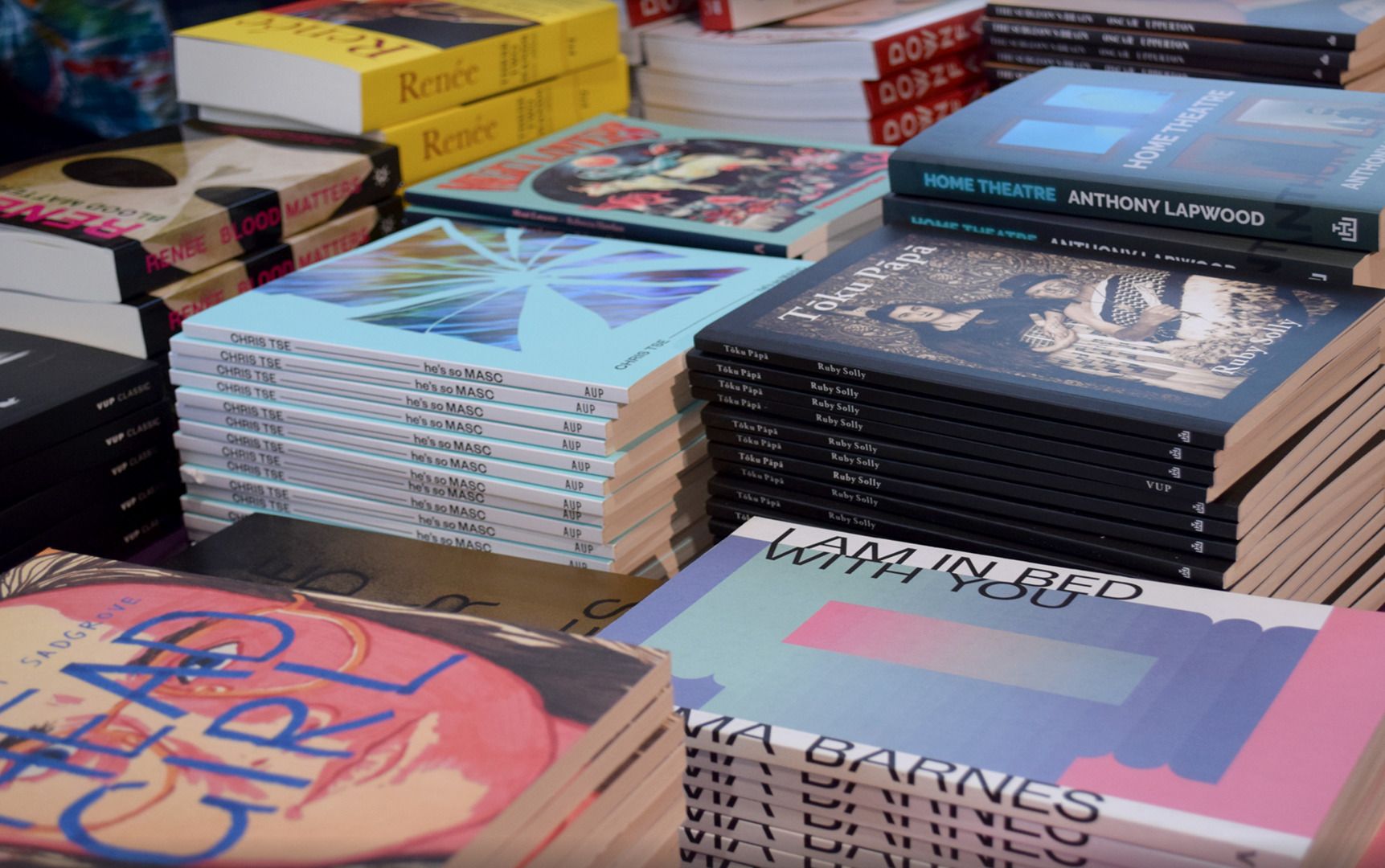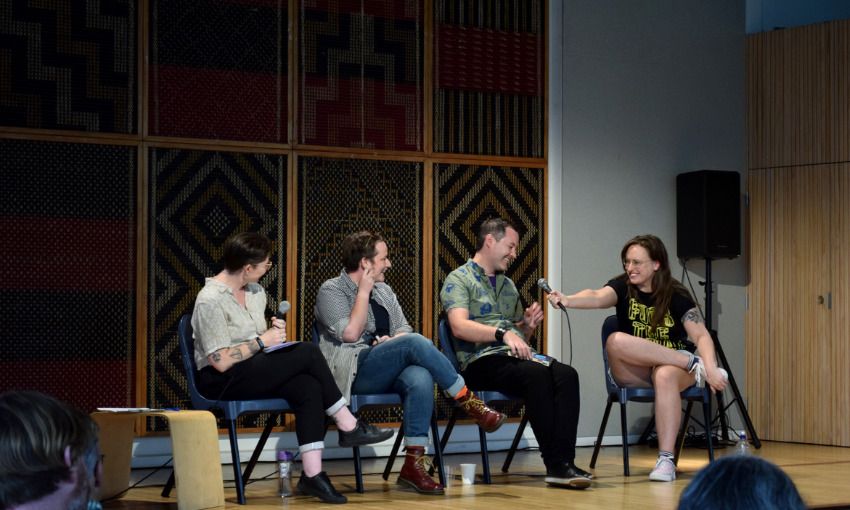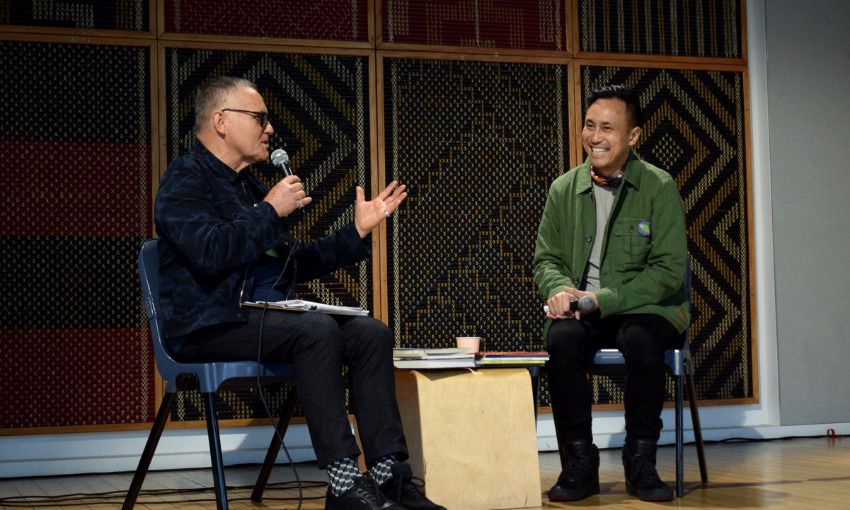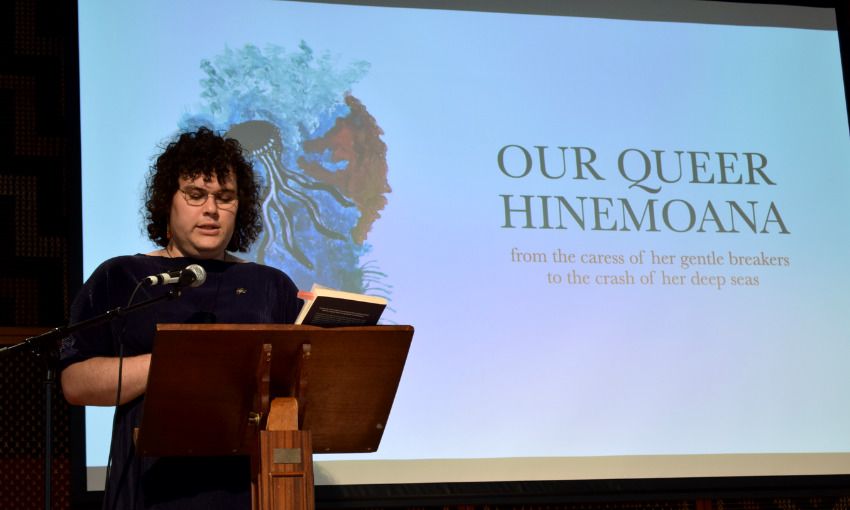Queer Magic and Queerevolutions
samesame but different is one of the most exciting Queer literary festivals out there! Naomii Seah reflects on the festival’s beginnings as she attends its diverse spread of offerings as part of Auckland Pride.
“It’s about creating a space for our own kōrero, our own Queer kōrero,” says Michael Giacon, a poet and long-time board member of the samesame but differentliterary festival.
Established in 2015 by the late, great Peter Wells, the samesame festival was conceived of as an explicitly Queer counterpart to other literary festivals – such as the Auckland Writers Festival, which Wells also co-founded in the 90s. Establishing samesame was perhaps unsurprising for the literary giant, Wells already had a decades-long career of breaking barriers for the LGBTQIA+ community in both the publishing and film scenes of Aotearoa.
In the programme for the first event, hosted in 2016, Wells reflects on how his sexuality was instrumental in building his identity as a writer:
“I was always a very timid boy. This was after I was bullied at Mt Albert Grammar. But I have to thank the bullies because I became a writer, which enabled me to say on paper what I couldn’t say out loud.
This small journey is the experience of many LGBTQI people. Language is our first line of defence … Language is what defines us as humans. Choice is what makes us who we are.”
Two years later, in 2018, Wells began his director’s address for the festival from hospital, where he was undergoing treatment for cancer. That edition of the samesame but differentfestival was to be his last, as he passed away in early 2019. Wells writes:
“We started samesame to give ourselves – our words, feelings, frustrations, our opinions, outrage and even our contemplated silences – a very special space in which we could communicate.”
Five years on, Wells’ vision of the festival remains alive and well.
On one of those quiet, grey sort of days that is so typical of Tāmaki, I headed along to my very first event at samesame – the poetry speakeasy, held in Grey Lynn Library. Although I had been to many poetry readings and open mics and slams before, this one felt different.
It was an intimate event. That was usual, as far as poetry events go. Grey Lynn Library itself is a particularly cosy venue, with its colourful murals, high ceilings and grand windows overlooking a limited floor space filled with purple plastic chairs. But besides the small size of the event – there were maybe 30 of us – there was a particular kind of familiarity that is hard to describe. Many of us were strangers, but the event was imbued with a silent understanding that comes from shared experiences. It was the sort of intimacy that you might feel walking into a friend’s house. Like recognising your friend’s personality in their scuffed hardwood furniture, or the types of fruit in their fruit bowl, or the art on their walls, the atmosphere of this event was – for lack of a better term – recognisably Queer.
The atmosphere of this event was – for lack of a better term – recognisably Queer
It was a type of magic. At the event, there was an unspoken welcoming, the unparalleled acceptance of Queerness in all its forms, iterations and disguises. Any Queer person will recognise this magic as hard won. For one of the first times in my life, I felt like I didn’t have to perform Queerness, or hide it. I could simply exist in my Queerness, whatever that meant to me.
This diversity of Queerness was present in the poems, too. There were quiet poems, loud poems, angry poems, poems about the end of the world, poems about being a dyke on the street, poems about migration, about religion, about home and belonging, about mothers; long poems, lyrical poems, comical poems, poems that drew on antiquity, on the long and often unspoken traditions of Queerness, and poems that dared to forge new futures.
As Wells alludes to in his 2016 address, there’s something about writing and creating that is fundamentally “Queer”. Good writing often breaks norms, explores boundaries, explodes worlds and creates new ways of seeing, thinking and feeling. But as Giacon says, there’s something special about being immersed in a Queer space. Even now I can’t put my finger on it. It’s camaraderie, community – or as one attendee put it – a real whānau.
Poetry Speakeasy and Open Mic at Grey Lynn Library
This year, the theme of the festival was Queerevolution, and to Giacon, it’s all about moving forward while being true to Wells’ vision. Giacon says one way they’ve achieved this is to keep refreshing the board – adding new members, new perspectives and new ideas. Yet they “always come back to the community”.
“We want to keep on the pulse of what is happening in the Queer literary world, and evolve and incorporate our past. There’s a sense of ever-widening circles, with a core kaupapa.”
Sitting in the audience that Saturday, during the main line-up, I certainly felt the themes of evolution reverberating through each speaker’s words. Writers young and old, established and emerging, spoke on the ways they’ve evolved their practice.
Badges for sale at samesame festival's Friday programme
The event Tuākana/Teina, chaired by Aroha Awarau, embodied this theme most clearly, exploring intergenerational iterations of Queer writing, their inspirations and their influences. But other panels also spoke to the theme of evolution, echoing and amplifying its meanings along the way. In We Are All Writers, chaired by Grace Shelley, panellists interrogated the evolution of writing and storytelling itself – does a story need to be written down to be valid? What’s the difference, if any, between a writer, a storyteller and an author?
We Are All Writers - featuring Grace Shelly (Chair), Ray Shipley, Anthony Lapwood, and Freya Daly Sadgrove.
There was also the evolution of individual practitioners. At samesame, certain writers, authors, poets and performers come back year after year, whether as panellists, performers or board members. This year, one notable recurring guest was Honoured Writer Chris Tse, our newly appointed Poet Laureate. His evolution is a remarkable one, becoming the first Gay Chinese poet in the role. His appointment marks a wider cultural revolution, one where Queer excellence is celebrated at the highest echelon.
Michael Giacon and Chris Tse in conversation
In the penultimate event, essa may ranapiri’s edition of the Peter Wells Lecture, they spoke about the evolution of Hinemoana, the feminine atua of the sea. In their lecture, ranapiri explored the many poems about Hinemoana, teased out recurring themes, and asked why Queer Māori poets are so drawn to Hinemoana.
“There’s something to be said about fluidity,” ranapiri said. They talked about the unwritten history of Queerness, and how Hinemoana was overlooked in favour of the male atua of the sea, Tangaroa. Perhaps modern poets are drawing on Hinemoana as a way to allude to that unspoken, hidden and overlooked history, suggested ranipiri. At these words the room rippled with recognition. The ocean is vast and ancient and mysterious, always changeable yet a constant presence; Hinemoana is an atua that has been overlooked, forgotten and buried in post-colonial times. There is little oral tradition to reconstruct her with, and that’s precisely what makes her Queer, said ranapiri. With these new works, modern poets are creating new traditions, legends and lore around Hinemoana.
essay may ranapiri hosts Peter Wells Lecture on Hinemoana
Like samesame, literature is always evolving. And the future is Queer. It’s evident in the expansion of the festival in recent years. At this year’s event, there was a sense of anticipation, of being on the precipice of a great movement in literature. This year, samesame truly embodied a Queerevolution of literature in Aotearoa. And judging from the excellent work of Queer writers being released non-stop of late, there’s no sign of slowing down.
When asked what his vision of the future of samesameis, Giacon says he believes the festival will continue expanding, moving away from Tāmaki to the wider reaches of Aotearoa. In fact, it already has, with events in Pōneke, and the introduction of live-streamed events due to widespread demand.
“The community is reaching in as much as the festival is reaching out,” says Giacon.
As the event moves into its eighth year in 2024, we can only imagine what samesame will evolve into next.
samesame but differentliterary festival
21-25 February 2023
Tāmaki Makaurau






